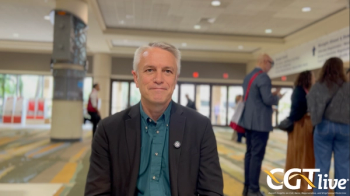
CardiAMP Cell Therapy Yields 100% Response Rate in Heart Failure
The new, 2-year data is from a roll-in cohort of 10 patients presented at the HFSA 2022 meeting.
The CardiAMP cell therapy showed clinical improvements in patients with
CardiAMP is an autologous cell therapy developed by BioCardia. It is intended to be a comprehensive therapeutic treatment that includes a proprietary molecular diagnostic to determine eligibility of patients’ bone marrow cells, a point of care processing platform that prepares the cells at the patient’s bedside, and the proprietary Helix biotherapeutic delivery system to administer the therapy.
“The 2-year outcomes for patients with heart failure receiving the investigational CardiAMP Cell Therapy in the roll-in cohort showed clinical improvement with 100% survival over two years. These outcomes surpassed our expectations in terms of patient benefit across prespecified primary and secondary endpoints,” Peter Altman, PhD, president and chief executive officer, BioCardia, said in a statement.1 “While this smaller cohort is not a head-to-head comparison, current state of the art therapies for these patients which have been successful in slowing disease, are assessed by us to have 79.9% survival after 2 years.”
These data were presented at Heart Failure Society of America meeting in Washington, D.C by Peter Johnston, MD, assistant professor of medicine and site principal investigator, Johns Hopkins University. The study has enrolled around 114 patients as of the conference call, however, data reported is from 10 patients in a roll-in cohort with 2 years of follow-up. The study’s total enrollment target is 260. Patient characteristics were typical of patients with New York Heart Association (NYHA) Class 2 and 3 and ischemic heart failure.
RAED MORE:
“We have had our most recent safety data monitoring committee their recommendations were that the study
Investigators observed no serious adverse events (AEs) related to treatment. All 10 patients completed 24 months of follow-up and 2-year survival was 100%. Patients had minimal changes in guideline-directed medical therapy over the study period. Clinical improvements were demonstrated by 6-minute walk distance test (6MWT) scores at 6 months (6% improvement; 28.5 m; P = .01) and 24 months (8% improvement; 31.0 m; P > .05) compared to baseline.1,2
“The remarkable thing is that in patients with very serious heart disease and very impaired cardiac function, there were no deaths in the first 1 years of follow up and there were only 2 hospitalizations out of the 10 patients in the 2 years... 1 was related to heart failure progression and the other patients had multiple return admissions and acute myocardial infarction,” Pepine added.2
Quality of life scores were also positive, with 70% of patients reporting improved or stable scores over 24 months.1 Half of patients improved by at least 1 NYHA class, with 4 at class 1, 20% had an unchanged class and 30% deteriorated from class 2 to 3 at 24 months. Median left ventricular ejection fraction (LVEF) improved at months 6, 12, and 24, compared to baseline. Echocardiography also showed recruitment of previously akineticleft ventricular wall segments at month 24 compared to baseline.
“There’s still a great unmet need. Looking at the more recent studies of the various drugs being used, such as the PARADIGM-HF study, EMPEROR, and DAPA-HF studies... you can still see there is an unmet need with around a 13% death rate still exists...our study will follow patients after 24 months and how these numbers unfold in this patient population will still be determined,” co-principal investigator Amish Raval, MD, professor, cardiovascular medicine, University of Wisconsin, said during the call.2
REFERENCES
1. BioCardia presents positive CardiAMP cell therapy heart failure trial two-year data at HFSA Annual Meeting. News release. BioCardia. October 3, 2022. https://finance.yahoo.com/news/biocardia-presents-positive-cardiamp-cell-110000572.html
2. CardiAMP Cell Therapy Trial for Heart Failure: Clinical Leadership and Management Call. Webcast. BioCardia. October 5, 2022. https://event.choruscall.com/mediaframe/webcast.html?webcastid=9NhAJ6lm
Newsletter
Stay at the forefront of cutting-edge science with CGT—your direct line to expert insights, breakthrough data, and real-time coverage of the latest advancements in cell and gene therapy.




































